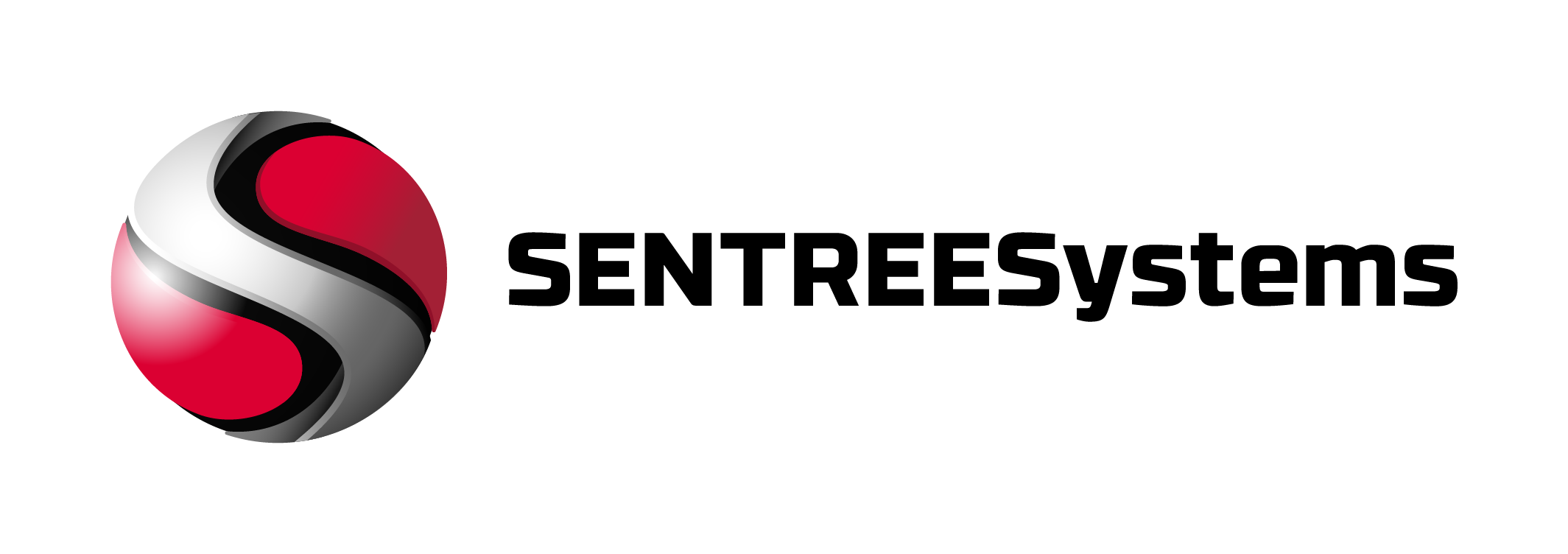Hello, and welcome to my ultimate buyer’s guide for SOC Services. As a professional cybersecurity expert, I have extensive experience in the cybersecurity industry. In this guide, I will provide you with everything you need to know about a SOC (Security Operation Center) to make an informed decision for your organization’s security needs.
Whether you are considering outsourcing your security operations or building an in-house SOC team, this guide will equip you with the knowledge to evaluate your options and choose the right one for your business.
Key Takeaways
- SOC Services refer to activities and support provided by a dedicated security team to help organizations manage their cybersecurity posture.
- SOC-as-a-Service offers several advantages for organizations looking to enhance their security posture.
- Building an in-house SOC team may be the preferred option for organizations with specific security requirements or regulatory constraints.
- Before deciding, it’s crucial to evaluate your organization’s current security posture and identify any gaps or vulnerabilities.
- Implementation requires careful planning and consideration.
What are SOC Services?
Security Operations Center Services refers to the range of activities and support provided by a dedicated security team to help organizations manage their cybersecurity posture. A SOC acts as a central hub for monitoring, detecting, and responding to security incidents. It combines people, processes, and technologies to safeguard against cyber threats and maintain the organization’s security resilience.
Benefits of SOC-as-a-Service
Outsourcing your security operations to a managed service provider can offer several advantages for improving your organization’s security posture. Here are some of the key benefits of SOC-as-a-Service:
| Benefits | Description |
|---|---|
| Access to Expertise | When you work with a SOC-as-a-Service provider, you gain access to experienced security analysts who are well-versed in the latest threats and security best practices. This expertise can be difficult and expensive to build in-house, particularly for small to mid-sized businesses. |
| Advanced Security Technologies | SOC-as-a-Service providers have access to advanced security technologies, such as threat intelligence feeds, security information and event management (SIEM) systems, and automation tools. These tools can help detect and respond to threats faster and more efficiently. |
| Round-the-Clock Monitoring | Managed SOC services typically provide 24/7 monitoring and response capabilities, giving you peace of mind that your security defenses are always up and running, even outside of business hours. |
By leveraging the benefits of SOC-as-a-Service, you can improve your organization’s security posture while reducing the pressure on your IT team.
Building an In-House SOC Team
If your organization has specific security requirements or regulatory constraints, you may prefer to build an in-house SOC team. Doing so allows for greater control over security operations, deeper integration with existing security solutions, and customization to meet unique needs.
However, building an in-house SOC team requires a significant investment in hiring and training security analysts, implementing security technologies, and maintaining up-to-date threat intelligence. Here are some key considerations when building your own SOC team:
| Consideration | Description |
|---|---|
| Hiring | You will need to hire skilled security analysts with experience in threat intelligence, incident response, and security operations. Look for candidates with relevant certifications, such as CISSP or CEH. |
| Training | You will need to provide ongoing training to keep your SOC team up-to-date on the latest threats and security technologies. Consider investing in training programs and certifications, as well as hands-on experience with real-world security incidents. |
| Technologies | You will need to invest in security technologies, such as SIEM solutions, threat intelligence platforms, and endpoint detection and response tools. Evaluate different vendors and solutions to determine which ones best meet your organization’s needs. |
| Processes | You will need to develop processes for incident response, threat hunting, and security operations. These processes should be documented and regularly reviewed to ensure they align with your organization’s evolving security needs. |
Building an in-house SOC team can be a significant undertaking, but it provides organizations with greater control over their security posture and the ability to customize their security operations to meet unique requirements. Consider the investment required and the ongoing effort needed to maintain an effective SOC team before making this decision.
Evaluating Your Cybersecurity Needs
Before deciding on SOC Services, it’s crucial to assess your organization’s current security posture and identify any gaps or vulnerabilities. Take stock of your existing security solutions, such as firewalls, antivirus software, and intrusion detection systems, and evaluate their effectiveness.
Consider the volume and severity of recent security events and incidents. Have you experienced any breaches or cyber attacks? Are you handling sensitive data or intellectual property that requires extra protection? These are all critical questions to ask when evaluating your cybersecurity needs.
You should also consider the level of security expertise and support your organization requires. Do you have the resources to build and maintain an in-house SOC team? Or would outsourcing to a managed SOC provider better suit your needs and budget? These are all essential factors to consider when assessing your organization’s cybersecurity requirements.
Types of SOC Services
When it comes to Security Operations Center Services, there is no one-size-fits-all solution. Managed SOC provide end-to-end support for security monitoring, detection, and response. Incident responders and malware analysts are available around the clock to take action as needed. Threat hunting services enable organizations to proactively search for and investigate potential threats before they cause significant damage.
Other SOC services include:
- Advisory services, which provide guidance on cybersecurity best practices and strategy development.
- Assessment services, which evaluate an organization’s security posture and identify vulnerabilities.
- Compliance services, which help organizations comply with regulatory requirements.
- Integration services, which ensure seamless integration of SOC solutions with existing IT infrastructure.
- Threat intelligence services, which gather and analyze information on cyber threats to provide actionable insights and training to security teams.
Empower your small to midsize business with Sentree Systems’ outsourced SOC services—a strategic leap forward in cybersecurity. While the prospect of establishing an in-house Security Operations Center (SOC) might initially appeal to businesses seeking control, the reality often entails hefty investments in resources, personnel, and technology.
Sentree Systems offers a more efficient and cost-effective solution. Our outsourced SOC services provide round-the-clock threat monitoring, rapid incident response, and a team of seasoned experts who stay ahead of evolving cyber threats. With Sentree Systems, your business gains a powerful partner that delivers tailored protection without the burdens of building and maintaining an in-house SOC.
Elevate your cybersecurity strategy today and let us safeguard your digital assets while you focus on driving your business forward.
By understanding the different types of SOC services available, organizations can choose the solutions that best align with their security needs and objectives.
Choosing the Right SOC Provider
Choosing the right SOC provider can be a daunting task, but it is crucial to ensure that your organization’s security needs are met.
When evaluating providers, consider their experience in your industry and their track record of delivering quality services. Look for a provider with expertise in security information and event management (SIEM) systems, as well as the ability to automate and integrate with your existing security solutions. It is also essential to ensure that the provider aligns with your organization’s security policies and regulatory requirements.
Factors to Consider
Here are some key factors to consider when choosing a SOC Services provider:
| Factor | Description |
|---|---|
| Expertise | Choose a provider with experience in your industry and a proven track record of delivering quality services. |
| Automation and Integration | Look for a provider with advanced automation and integration capabilities to improve security operations and streamline workflows. |
| Alignment with Security Policies and Regulations | Ensure that the provider aligns with your organization’s security policies and regulatory requirements. |
| Scalability and Flexibility | Choose a provider with offerings that can scale and adapt to your organization’s evolving security needs. |
By considering these factors, you can select a SOC Services provider that meets your organization’s specific security needs and helps strengthen your cybersecurity posture.
Key Considerations for Implementation
Implementing a SOC is a critical step in enhancing your organization’s cybersecurity posture. Here are some key considerations to keep in mind:
Define Your Security Architecture
Before implementing Security Operations Center Services, it’s essential to define your security architecture and infrastructure requirements. This step ensures seamless integration with your existing technology stack and provides a clear overview of your security operations. Ensure that your SOC Services provider aligns with your security architecture and can provide support for your specific needs.
Choose the Right SOC Offering
Select the SOC offering that best fits your organization’s needs, whether it’s managed SOC, incident response, or threat hunting. Consider the level of customization and scalability the provider offers to align with your evolving security requirements. Determine whether you need SOC Services on a subscription basis or tailored to specific security events or incidents.
Ensure Flexibility and Scalability
Ensure that your SOC provider’s offerings are flexible and scalable to accommodate your organization’s growth and future security needs. This includes the ability to integrate with existing security solutions and support the addition of new security technologies. Keep in mind that your organization’s security needs may change over time, and your SOC provider should be able to adapt to these changes with agility.
Define Clear Roles and Responsibilities
Define clear roles and responsibilities between your organization and the SOC provider. This includes defining the scope of the services provided, the level of access granted to the provider, and the communication channels to be used during security incidents. Establishing these boundaries helps ensure a clear and effective partnership between your organization and the SOC provider.
Measuring the Success of SOC Services
As a cybersecurity journalist, I know that measuring the effectiveness of SOC is crucial for any organization that wants to protect itself against cyber threats. While it may be tempting to focus on the number of incidents detected, this does not always reflect the quality of the service provided. Instead, organizations should establish measurable metrics and key performance indicators (KPIs) that reflect their specific security goals and needs.
One important factor to consider is the reduction in the time it takes to identify and remediate threats. A rapid response to security incidents can significantly reduce the potential damage and minimize the disruption to business operations. Organizations should also evaluate the protection of sensitive data and intellectual property as part of their SOC KPIs. This is essential to mitigate the risk of data breaches and reputational damage.
Another key consideration is the overall improvement in the organization’s security maturity and resilience. This can be measured through regular security assessments, including penetration testing and vulnerability scanning. By tracking the progress of their security posture, organizations can determine the effectiveness of their chosen SOC-as-a-Service provider and identify areas for improvement.
Ultimately, the success of SOC should be evaluated based on the organization’s unique needs and goals. By working closely with their SOC provider and establishing clear KPIs, organizations can ensure that they are getting the most out of their investment in cybersecurity.

The Future of SOC Services
As cyber threats continue to evolve and become more sophisticated, the future of SOC-as-a-service looks promising. In the coming years, SOC providers will need to keep up with emerging threats and adapt to changing security needs.
One way this may happen is through the integration of advanced technologies like artificial intelligence and machine learning to enhance threat detection and response capabilities. These technologies can automate routine security tasks, freeing up security analysts to focus on more complex threats.
Additionally, SOC providers may begin to offer more customized solutions, tailored to the specific security needs of each organization. This could include SOC Services on a subscription basis or custom-tailored to specific security events or incidents.
Whatever the future holds for SOC’s, it’s important to choose a provider that stays up-to-date with the latest security trends and technologies. With the right SOC provider by your side, you can rest assured that your organization is protected against today’s and tomorrow’s cyber threats.
Conclusion
In conclusion, SOC Services are essential for organizations to protect against cyber threats. As a professional copywriting journalist, I hope this ultimate buyer’s guide has provided you with valuable insights into the world of SOC’s. Whether you choose to outsource to a managed service provider or build an in-house SOC team, it’s crucial to evaluate your cybersecurity needs and select a provider that aligns with your specific requirements.
Remember to consider factors such as expertise, proven track record, and alignment with your security policies and regulatory requirements when choosing a SOC Services provider. Measuring the success of requires establishing measurable metrics and KPIs that go beyond the number of incidents detected.
The future will undoubtedly involve advanced technologies like artificial intelligence and machine learning to enhance threat detection and response capabilities. Therefore, it’s vital to ensure that your chosen SOC-as-a-Service provider stays ahead of emerging threats and adapts to your evolving security needs.
With the right SOC provider and security experts by your side, you can enhance your security posture and safeguard your sensitive data and enterprise assets. So don’t hesitate—start evaluating your organization’s SOC-as-a-Service provider needs today!
FAQ
Q: What are SOC Services?
A: Security Operations Center Services, refer to the range of activities and support provided by a dedicated security team to help organizations manage their cybersecurity posture. A SOC acts as a central hub for monitoring, detecting, and responding to security incidents. It combines people, processes, and technologies to safeguard against cyber threats and maintain the organization’s security resilience.
Q: What are the benefits of SOC-as-a-Service?
A: SOC-as-a-Service offers several advantages for organizations looking to enhance their security posture. By outsourcing to a managed service provider, businesses can leverage the expertise of experienced security analysts and access advanced security technologies that may be costly to implement in-house. Additionally, SOC-as-a-Service providers offer round-the-clock monitoring and response, allowing organizations to strengthen their security defenses without the need for a dedicated in-house SOC team.
Q: How can I build an in-house SOC team?
A: For organizations with specific security requirements or regulatory constraints, building an in-house SOC team may be the preferred option. This approach allows for greater control over security operations, deeper integration with existing security solutions, and customization to meet unique needs. However, it requires significant investment in hiring and training security analysts, implementing security technologies, and maintaining up-to-date threat intelligence.
Q: How do I evaluate my cybersecurity needs?
A: Before deciding on SOC Services, it’s crucial to assess your organization’s current security posture and identify any gaps or vulnerabilities. Take stock of your existing security solutions, such as firewalls, antivirus software, and intrusion detection systems, and evaluate their effectiveness. Consider the volume and severity of recent security events and incidents. This assessment will help you determine the level of security expertise and support your organization requires.
Q: What types of SOC Services are available?
A: SOC Service providers encompass a wide range of offerings, tailored to meet different organizational needs. Managed SOC provide end-to-end security monitoring, detection, and response, with dedicated incident responders and malware analysts ready to take action as needed. Some SOC providers also offer threat hunting services to proactively search for and investigate potential threats before they cause significant damage.
Q: How do I choose the right SOC Services provider?
A: When selecting a SOC provider, there are several factors to consider. Look for a provider with a proven track record of delivering quality services and a deep understanding of your industry’s cybersecurity challenges. Consider their expertise with security information and event management (SIEM) systems, as well as the level of automation and integration capabilities they offer. It’s also essential to evaluate their ability to align with your organization’s security policies and regulatory requirements.
Q: What are the key considerations for SOC implementation?
A: Implementing a SOC requires careful planning and consideration. Define your security architecture and infrastructure requirements to ensure seamless integration with your existing technology stack. Determine whether you require a SOC Service provider on a subscription basis or custom-tailored to specific security events or incidents. Consider the scalability and flexibility of the provider’s offerings to accommodate future growth and evolving security needs.
Q: How can I measure the success of SOC Services?
A: To gauge the effectiveness of a SOC Service provider, organizations need to establish measurable metrics and key performance indicators (KPIs). Look beyond the number of incidents detected and focus on the reduction in the time it takes to identify and remediate threats. Consider the protection of sensitive data and intellectual property, as well as the overall improvement in your organization’s security maturity and resilience.
Q: What does the future hold for SOC Services?
A: As cyber threats continue to evolve and become more sophisticated, a Security Operations Center will play a vital role in organizations’ security strategies. The future of SOC’s will likely involve advanced technologies like artificial intelligence and machine learning to enhance threat detection and response capabilities. Organizations will need to ensure that their chosen SOC-as-a-Service provider stays ahead of emerging threats and adapts to their evolving security needs.
Q: Why are SOC Services important?
A: Hiring the right SOC Service provider is crucial for organizations of all sizes and industries to protect against cyber threats. Whether you choose to outsource to a managed service provider or build an in-house SOC team, it’s important to carefully evaluate your cybersecurity needs and choose a provider that aligns with your specific requirements. With the right SOC and security experts by your side, you can enhance your security posture and safeguard your sensitive data and enterprise assets.



